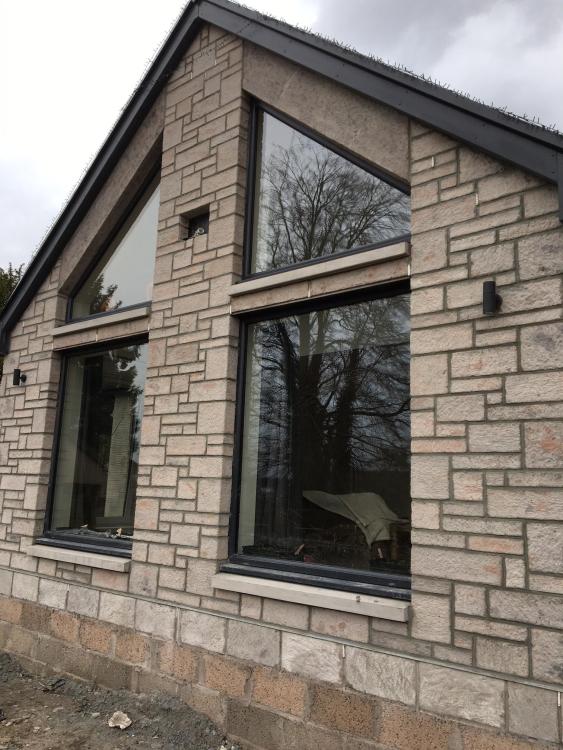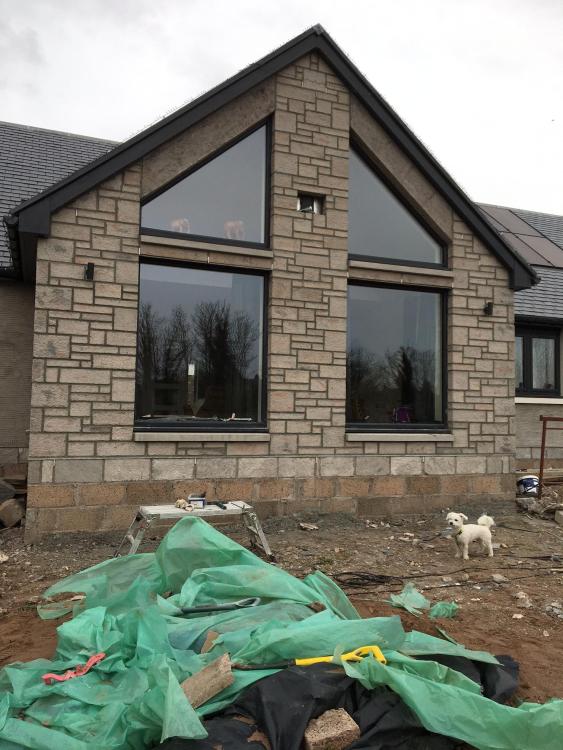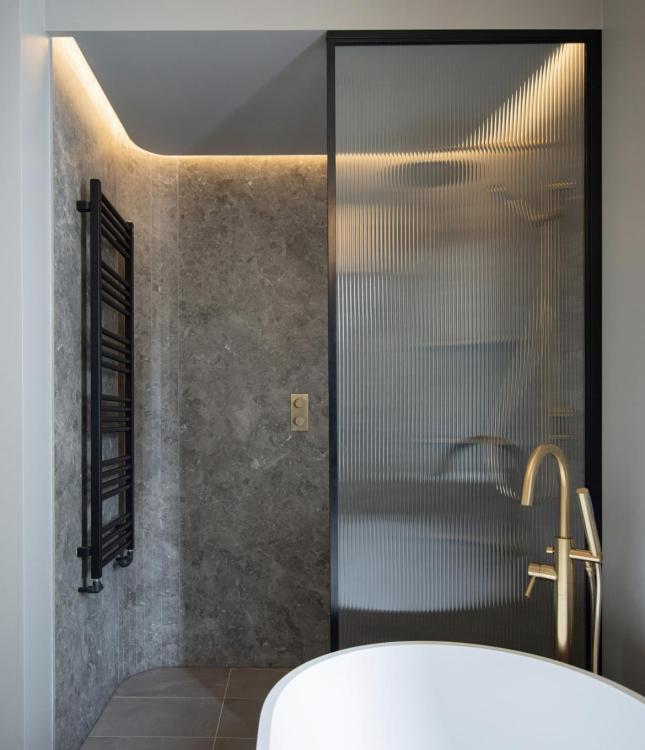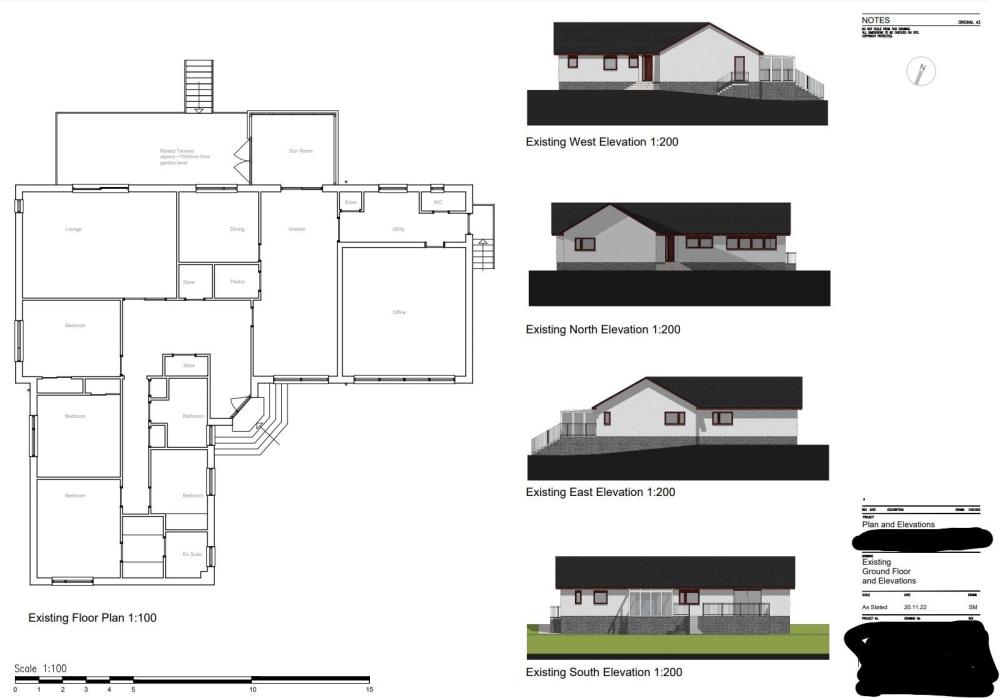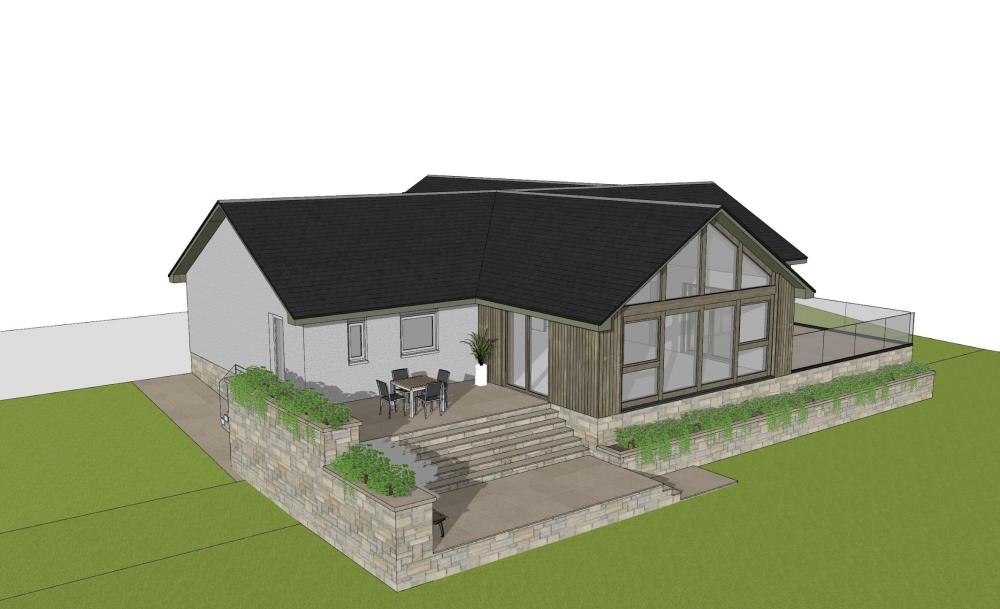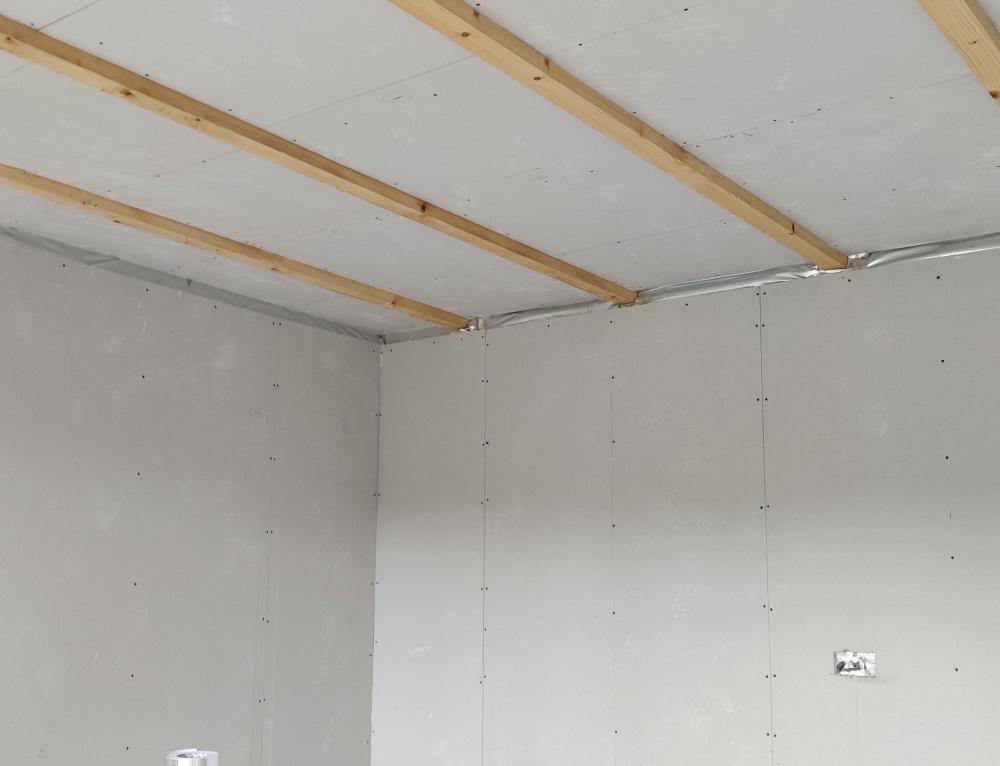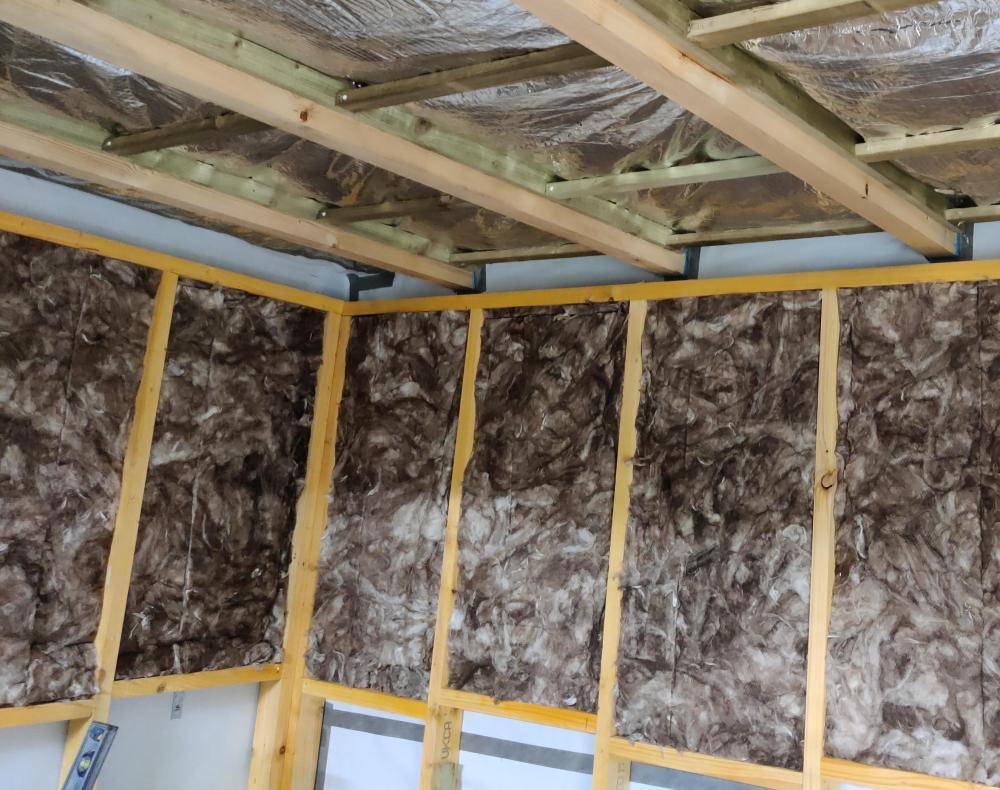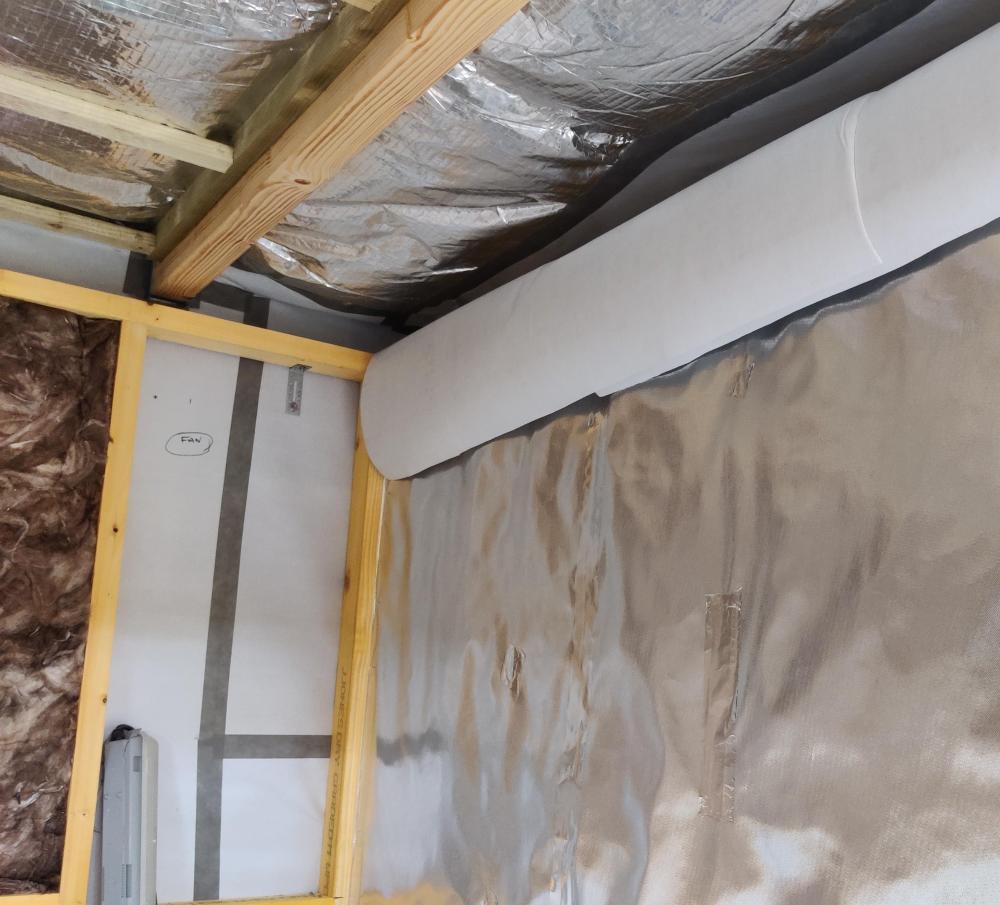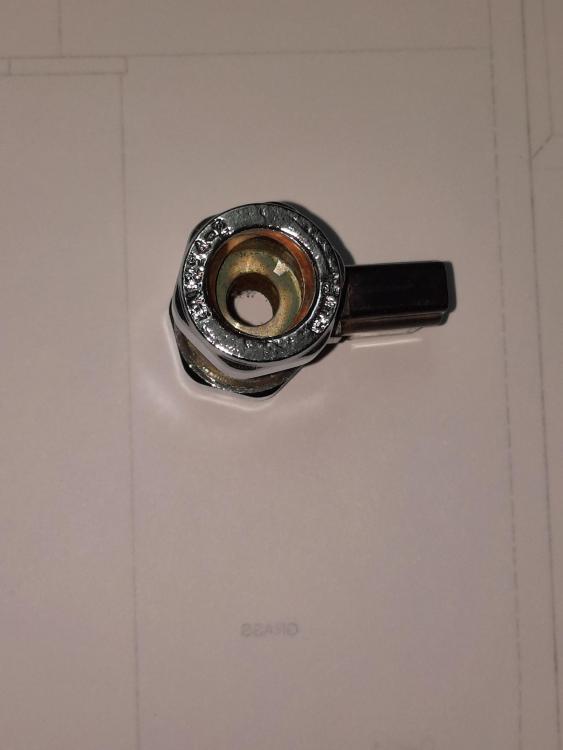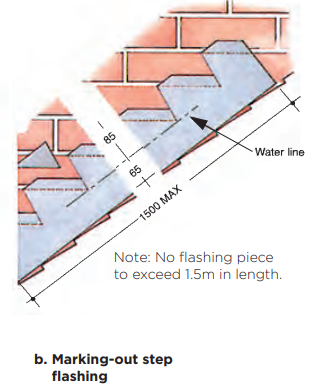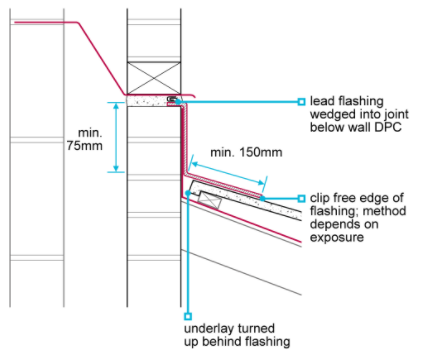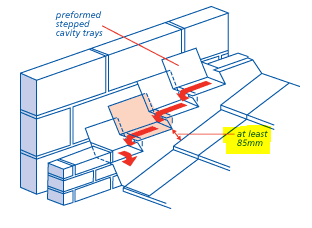Leaderboard
Popular Content
Showing content with the highest reputation on 04/12/23 in all areas
-
I doubt it, in the future you'll need to hire scaffolding which will wipe out any savings. Panels are now well less than £100 each, so no longer the dominant cost factor - inverters, optimisers, mounting systems and installation etc combined cost more than the panels. My system cost £5k and the payback period is currently 5 years. The sooner you get it, the sooner you get the benefits.2 points
-
2 points
-
You need to actually check the system operation before adopting the "fault finding by substitution" technique before you waste any money (replace the controller with the hive and find it still does not work) The existing programmer should work. It should have a light to show when heating is on and when hot water is on. Do those lights turn on and off at the correct times as expected? if not the programmer is probably faulty. If the lights on the programmer operate as they should but the boiler is switching on and off at eratic times not related to what the programmer is doing, then it will almost certainly be one of the motorised valves in the cupboard with the tank has failed. they look like Honeywell so unless they have seized it is usally the actuator head that fails and they can be replaced without needing a plumber. The existing system should just work heating and hot water on and off when they set it and temperature what they set it, with no continual input from the user.2 points
-
There were a lot of doubters on this thread. It couldn’t be done, they cried. I’m mad, they said. They were wrong: We changed the colour of the towel heater, but otherwise nailed the render spot on! Tile cutting company were excellent. Only mistake they made was that they forgot to label the pieces, which gave me an interesting game to play matching the adjacent tiles; took me a day to match them all up. Was a fun day, though required a lot of care; turns out that 2520 by 40 by 6mm porcelain is harder to slide around than the average puzzle piece. #focuseddetermination #nevergiveuponyourdreams2 points
-
Some data on the install now that I have 32 days worth, for those interested: Modelled heat demand for that period was 1518kWh. This probably has a 10% error margin as it's just a multivariate regression of heating data before the ASHP went in Actual gas usage in that period minus estimated hot water usage was 475kWh. If anything the hot water estimate is likely to be pessimistic ASHP usage in that period was 200kWh So on average every 1kWh the ASHP used offset between 4.5 and 5.2kWh of gas 65-70% reduction in gas heating usage from the install of a single minisplit unit Assuming 90% boiler efficiency that gives a CoP estimate of 4.1-4.7, which compares well to the data sheet SCoP of 4.2 Minimum daily CoP estimate of 3.1, maximum of 6.1. There's been a good range of temperatures over this period to see behaviour over a real heating season, though obviously performance will be lower in winter months: Daily mean: 7.0°C Max: 10.9°C Min: 1.2°C. Lowest reading -4°C That's probably all the data I'll get for this heating season as we're getting into large solar gains from the conservatory which invalidates the heating model. Since moving to Octopus Flux everything the heat pump has used has effectively come from PV due to the import/export symmetry. So we've had ~1MWh of free heating from the solar panels, which sort of blows my mind. That's effectively paid back ~18% of the installed ASHP cost in one month. I couldn't be happier with the results of this little experiment, they've lined up perfectly with expectations. For balance, a few downsides of going with a cheap unit: The indoor unit housing is cheap and plasticy, but not offensively so Horizontal fan sweeping is manual only and no fancy occupier avoidance features like on the pricer brands Only the low fan speed is very quiet and the auto mode tends to have weird peaks of high fan speed when starting up etc. The outdoor unit has a slight vibration resonance in the housing, I have it well out the way so not an issue but I may add some damping pads at some point to eliminate it The Tuya wifi integration is a great little bonus and I have a control system written with the Python bindings for much finer control on scheduling which makes best use of the Flux tariff.2 points
-
Well, having found this forum a few months ago and benefited greatly from the well-informed posts concerning MVHR I felt I'd like to share my own experiences and give a condensed list of useful practical tips. Unfortunately on reflection I feel compelled to write a different kind of post but still in the spirit of helpful advice. Having just DIY installed a professionally designed and supplied MVHR system in my bungalow, and looking closely at all the time and numbers I conclude that it is largely not worth it in terms of either cost or performance. I have come to the conclusion that a carefully designed system of adjustable wall, window and ceiling vents will fulfil the same needs at a fraction of the price and effort. The primary reason for this conclusion is that building regulations section F requires a continuous ventilation flow rate for an MVHR system of 0.3x the floor area in L/s. For a 100m^2 bungalow = 30 L/s. At this ventilation rate, assuming an average 21C inside and annual average 10C outside, with gas central heating, you will be saving about £200/year on heating with a 90% efficient MVHR. My experience with both this house and a previous one with an MVHR system is that you actually need only a small fraction of 0.3 ACH for any house to ventilate it adequately. Previous other posts on this forum also conclude that the required flow rate which they actually run their houses on is much lower than 0.3 ACH. The 0.3 ACH value is an outlier worst case, most owners of modern houses will find 0.1 ACH completely comfortable, even with cooker hoods and showers taken into consideration. I have personally found that about 0.05 ACH continuous is absolutely fine for a few people in a small house. If you now look at 0.05-0.1 ACH continuous you find that the heat saving per year is £30-£60/year. Out of interest I also do scuba diving occasionally and can confirm that about 0.5 L/s for one person doing moderate exercise adjusted from 10-20m pressure to 1 bar at the surface is normal. Now lets look at cost and effort. For my 100m^2 bungalow I paid BPC ventilation (who, despite what I have said are excellent in every way) about £2000 to design and supply an MVHR system for my 100 m^2 bungalow. I have very conservatively spent 100 hours planning, installing and testing the system. I have had to take paid time off work to allow building control in to inspect. I have had to hire a calibrated flow meter at a cost of about £140 including postage. I have messed about with it for many hours (about 20) to balance the system. I have spent at least 10 hours preparing the relevant documentation for Building Control. I have had to shave the bottom off all of my doors to make a 10mm gap for through house air flow and in some cases re-paint, I don't even want to think about those hours! I could go on but shall we call it £5000 if I paid someone to do all this? That's not unreasonable. So I pay £2000 and do it DIY for a £50/year payback = 40 years Or I pay someone £5000 for a £50/year payback = 100 years The MVHR unit will probably last no more than 25 years but the ducting will hopefully last a lot longer. According to the manufacturers of the MVHR I need to inspect the filters every 3 months and replace them at 2x£20 every 6-12 months. And if you are CO2 conscious lets not forget the cost of manufacturing the kit in the first place - who knows? So why did I do it? Well I got suckered into it. The last house in which I DIY installed a system like this I swapped an old heat exchanger for a crate of beer, put simple ducting and fans in about 20 years ago. I didn't need to consult building control, just did it and ran it for 10 years. It worked really well and cost me about £400 in bits and about 50 hours time. I started this new house recently and suddenly building control and the 0.3 ACH rule comes in. Still determined I pressed on to make sure my house was compliant but I should really have stopped and thought about it before I spent my £2000 on kit and began work. Are there any benefits to MVHR? Not many. I'm confident that in new build in 20 years time it will all be gone and that carefully planned vents incorporated into high quality glazing units and ceilings will be the order of the day. The only things which I can think of are filtration of pollen and pollution and maybe noise reduction (vents let in noise). If I were to do it again? No MVHR. High quality adjustable wall vents low down in the corners of all bedrooms (the rooms which you want to be coolest). Similar ceiling vents in living areas to let the air out. Bathrooms with good, possibly motorised, flap valves on the extractors. A recirculating cooker hood fan or total extract with similar good flap valve. Chase and fix drafts religiously including floors with insulating and low air permeability underlay. Hire a cone flow meter to see what's really happening. https://www.bsria.com/uk provide this service for £80-140 depending on whether you collect or have it delivered. Set the system at about 0.05-0.1 ACH On a two storey house a duct and low power fan to circulate the air top to bottom (my last house had this and it was excellent) If the layout of the house were amenable ( I have solid floors so no chance) I would probably attempt to draw air in over the foundations of the house to either pick up heat in winter or let go of heat in the summer. Follow the building regs guidelines section F which do have some good rules but don't bother telling them unless you absolutely feel the need to - it's just some wall vents in a house... Regards, David Hughes Ex F35 Lift System Stress, Thermal and Dynamics Engineer and home energy efficiency enthusiast. The Wirral.1 point
-
I think I read that article 15 years ago. Don't hold your breath. Have you compared the price of roof integrated PV compared to tiling/slating. Bear in mind that you will have scaffolding up anyway.1 point
-
1 point
-
I put 4kW in 12 years ago and am now trying to upgrade which is proving difficult. Wish I'd put more in from the start. Electric vehicles, ashp and better export prices are here or on their way and these only increase the attraction. Furthermore overdimensioning means you still get meaningful output in the shoulder season. I'm not sure how the maths works cost wise, but it's a long term investment and electricity is the way to go.1 point
-
Considerably cheaper than what we paid.. i The Solis inverter is Chinese and not as expensive as the German ones but by what I heard from an installer ..works perfectly fine. Seems reasonably priced ..I’d get the 7.29kWp array if finances allow. I thought DNO approval was over 10kWp? 3 phase electricity is usually expensive so worth really considering this. We were only 5.5kWp but in (sunny) Dover with a hybrid Fronius inverter ( to keep the battery option open) and 3 phase electric ..was considerably more expensive.. and still wish we went for a larger array …1 point
-
Centralised mechanical ventilation is consequence of minimising energy losses, and is only required if you are setting a high energy performance target for your conversion. One significant factor with regards energy loss is uncontrolled ventilation, where the fabric of the building is leaking the warm air that the heating system has been heating up. If you take steps to reduce those energy losses, through the uncontrolled ventilation, then you get to a point, around 3m³/m².h@50Pa on an infiltration test, that you will no longer meet building regs for natural ventilation. At this point the Building Control officer will look for a whole house ventilation system that then brings the property back to meet the minimum ventilation requirements. If you've plugged up all the leaky holes and gaps to stop the energy losses through uncontrolled ventilation, then an MVHR system allows you to control the ventilation and recover the heat from the internal air in the property, but if you're "only" achieving an infiltration rate of say 2.5 or 3m³/m².h@50Pa then you have to question whether the MVHR will be cost effective. If you are achieving in the region of 1m³/m².h@50Pa infiltration rate, then MVHR is very likely to be cost effective. But, if you are not setting your energy performance targets at that level it may be better to hit 3m³/m².h@50Pa infiltration rate, go without MVHR, have controllable trickle vents on your windows and use extracts in the wet rooms.1 point
-
1 point
-
1 point
-
Hi all, Just a quick introduction. We bought this bungalow in the Glasgow area late last year and are working our way through renovating the entire property. The previous elderly owners had understandably let the place go somewhat and we've already uncovered a few surprises. I'm a sparky to trade and pretty handy at most stuff so will be carrying out as much of the renovations myself where possible; handing over to the pros where necessary. We have an extension proposal sitting with planning just now to extend out from the rear of the property to create a large kitchen dining area with glass gable, and also to convert what used to be the integral double garage at the front, into a master. The previous owner had previously converted this to a home office and built an external two storey double garage, but it doesn't flow well with the rest of the property. Some drawings attached below of existing and proposed alterations and one of our renders. Hoping to add to the forum where I can pick the brains of others when i'm stuck Cheers1 point
-
I realise a blinding error in my text above, I wrote, "so yes, I do believe they are structurally capable of large increased loads..." however, I should have said "so yes, I do not believe..." simply put I don't think things are build with all this spare capacity, you would be somewhat shocked at how close to the bone some things are. "Sweating the asset" is something we say a lot at work. I think, sadly, other things will overshadow the push for net zero, I cannot see this country remaining civil for much longer, too many things are now eroding the grounds on which global peacefulness was founded in the mid 40's and further bolstered in 1991 with domestic issues now becoming as big a threat of unrest with other nations. I hope I am so wrong, but I don't see the next decades of my life being as simple, trouble free and peaceful as those that preceded them. I am sure Ukraine had some national projects planned... I hear myself all too often buying bits and pieces and joking it's part of my apocalypse planning. I bought 12/24V solar charger controllers last week - this is my plan to be able to convert some of my PV system to totally off grid for little financial outlay, just in case.1 point
-
Ah I've missed that. As this is a new thing, if you can't find an example to amend, then you can probably make it up as you go along. Then everyone will copy that I think a house plan, with a few lines for network cables / fibre optic cables will do fine. You're probably planning to put those cables in anyway. The Connected Home – Building Regulations Part R maybe?1 point
-
Option 1 to 3 are all insignificant as far as weight is concerned. Ideally attach to the 150 beams. FYI - A sheet of plasterboard is around 20kg.1 point
-
Update Walls insulated with 90mm Frametherm 32, vapour barrier, and then plasterboarded. Due to be taped on Monday. Expansion gap at top of wall, is to allow roof to move up and down in relation to the internal walls. Once the plasterboard is taped the gap will be covered with wooden boards (like a skirting at the top of the wall), this will be attached to the ceiling not the walls. Issues so far Roof membrane was supposed to 5.4x5.6, but arrived 4.5x5.6, so had to go back. Patio door sliders, rail for top and bottom slider rails was supposed to be 3.5m long, was supplied 3m long. Patio door lock hole in wrong position, so had to be redrilled in the correct place. Next jobs for me, build decking at front of building and to side door.1 point
-
Ok. There is defo a serious leak here as the system is part-draining down and is sucking air back in through the automatic air bleed vents ( they work both ways when there isn't any water inside ). Stop using the heating system immediately, as you're just constantly refilling with fresh oxygenated water which is corroding everything ferrous, hence the dirty look to the water. Get the plumber back in immediately to fix, give this to him in writing, text / email / WhatsApp and tell him either he fixes this, or you'll get someone else at his expense.1 point
-
Be careful everyone, as these are serious accusations. For example it might have been prudent to sell the vehicles internally, to release cash for operational purchases. Also there is probably no "right" time to appoint an administrator. If every company struggling for orders was to refuse new business in case it all went wrong, then that would be the end of most. I'm not supporting anybody here as I don't know. Just saying to try to make points general rather than specific and avoid accusations.1 point
-
Paint it and put a label on it, adjacent to it explaining the function so the next person working on it has an idea1 point
-
If they sold or transferred these assets within the last 6 months the liquidator should be taking legal steps to have those transactions reversed.1 point
-
@Oli I would very much recommend sticking with an ICF, and as I have explained directly to another member, an EPS system will be a night & day upgrade from wood-crete. There are plenty of ICF suppliers who are kosher, so please do not tar all of them with the same brush I have offered other members some contact details for a very good ICF installer, and he can be further recommended by at least 2 other Buildhub members who's homes he has erected / is in the process of erecting. @All. If this is of interest / help to anyone, please PM me.1 point
-
My installer didn't seem keen - you're putting mechanical systems motors etc inside a hot humid wet environment - I guess its not ideal. Ducted is an option... (Can't maybe was too strong - there's always options )1 point
-
We've just had the first service carried out on our hybrid and chatting to the salesman we were told they now need a company directors approval to take an EV in part exchange.1 point
-
- Call out hydrogen-in-boilers as the most ridiculous thing you could possibly do at every opportunity - Campaign for welfare taxes/subsidies to be part of general taxation rather than on electricity; and for cost reflexive pricing on electricity including transparency on their make-up (standing charges are way too low vs reality; unit rates are way too high vs reality; all of which conspire to make heat pumps less economic than they actually are for UK plc) - Prepare for electrified heating as the house is renovated generally (induction hobs, electric ovens, sacking off gas fires, recreating space for hot water storage in many cases etc) - Decide when end of life is for your existing heating system so that the upgrades can be a thought through exercise rather than an almighty panic whereby the easiest thing to do is replace has with gas e.g. Newbuild gets heat pump. That's a no brainer. I don't have an air to water heat pump at the existing place in Cambridge though. Uneconomic at the time the boiler went in back in 2017 and still uneconomic/undesirable to install a hot water cylinder where none exists. I do have a little 3.5 kW air to air unit downstairs though; which has electrified ~80% of space heating load at a sCOP of ~5 if datasheet are to be trusted; for a peanuts installed cost and disruption. The combi is retained for instantaneous hot water and top up space heating. Radiators can heat the place with a 55C supply/47C return and the connections are all under the plinths; as is a 32A supply for a heat pump. Cooking is all electric already. When propane splits become available a tall kitchen unit gets swapped for the all in one tank. Hopefully they become available before gas standing charges skyrocket and/or disconnections cost real money. (next 2-3 years) Or when propane monoblocs ceae with their stupid restrictions on placement near doors etc. Prefer the split though to keep the size of the outdoor unit down, keep all water indoors, and keep the valuable half of the system indoors. (EV chargers are already starting to go missing; monoblocs won't be too far behind once the pikeys realise that two hoses and an a cable is all that secures a couple thousand £s outside the house and all you need to operate it is a new thermostat etc) Gas boiler is therefore end of lifed based on availability of alternatives / roughly in next 3 years rather than on it expiring in this example. There's been a few years of "whilst at it" preparation beforehand and a quick win of an air to air unit in the interim. (which given the low install cost, PV, and recent price hikes has probably already washed its face economically in addition to providing the welcome sanctuary when it's chuffing hot out) Alternative option is a standalone DHW cylinder with heat pump is and a slightly more powerful standalone air to air for heating. (probably a two head multi split) It's the winter DHW that's hard though.1 point
-
Hi Pete, Insulhub was building our house for us. It was left built to first floor level so me and my husband have taken over. I also know a few other people which have built their selves, so happy to try and give advice.1 point
-
Quite big. But the concrete should be totally stable now, and you are using the mat, so i think you can risk omitting movement joints....not nice in a room.1 point
-
I use these rods in the garden for bean stakes, as they are cheaper than reinforcing rods, yet are galvanised.1 point
-
So diy or change. In case an explanation of basics helps.. There will be a load coming down your structural walls, measured in kN/m. Say it was 50kN/m and the ground capacity is 100kN/m2, then you make the concrete foooting 0.5m wide. But if the capacity is 50kn/m2, then you need a base of 1m width. The floor is separate and can sit on much weaker ground. If your project is several stories high, with very big rooms, then the wall loadings will be very high, and it would become technical and expensive. Are you sure the se wants to dig out the whole area.? What woild go back in? Plesse be aware that we don't know your circumstances and haven't seen your se report or drawings. Btw, piles will push through the soft clay very easily.1 point
-
1 point
-
I doubt Andy will respond. I believe he is still recovering from a heart attack so probably isn't on social media of any sort. He probably isn't the best one for us to be contacting either...1 point
-
Might be asking for a detail where the pipe passes through the DPM. Just tell him you’re sealing all pipes to the DPM.1 point
-
It's worth getting a few quotes for piling, they varied widely for our job. We ended up with a company owned by a structural engineer, so they threw the calculations in for free and were the most reasonable. There were no vibration issues. Lots of mucky spoil to dispose of tho', so cost that in.1 point
-
1 point
-
I think he's asking for far more than he really needs but all I can suggest is providing it. The only "report" I can think he needs is from the designer eg structural details to justify the design. As for a warranty I would collect together warranty info for the roof tiles and roof membrane. Possibly from their websites. If its a flat roof the installer of the top layer would normally provide a warranty for the system used. If you are getting a 10 year warranty provide details of that. So you may already have provided the first bit. Normally a plan showing the house on the site with the location of things like WC, showers, stacks, inspection chambers and the routing of pipes to the main sewer in the road. Ditto for surface water. Ideally the plan would have the depths for pipes but you might get away with specifying the falls on pipe runs. If soakaways are being used the location should be shown with the distance from the house marked and a note on how the soakaway will be built. He may also ask you to justify the size of the soakaway but I would wait for him to ask unless you have that in hand already. Where pipes go through the walls below ground there are standard ways for dealing with settlement and rodents ingress. Probably copy them from the regs? When stacks go through the roof there there should be some sort of flashing around it. For this sort of thing perhaps copy the suppliers drawing onto a blank drawing and add a title such as "Flashing detail for roof penetration of soil stack". It's not real hard to make it look professional just annoyingly time consuming.1 point
-
What about drilled piles? Thought they weren't too bad for vibration. https://www.self-build.co.uk/piled-foundations-explained/1 point
-
1 point
-
Reading about this one thing has struck me. The difference between housing and transport. I am sitting comfortably in my well insulated low energy house, enjoying the same standard of living I had in any other house, arguably a better standard of living, but at very much reduced energy usage so much better for the planet. so in other words moving from an older inefficient house to a new well built one, is good for the environment AND the occupier. but when it comes to transport, I cannot yet see the solution that still gives me all I had before while saving the planet. That is the gap that has to be filled, so transport can go green in the same way housing can, without reducing our expectations of what it delivers.1 point
-
My son is a car salesman and he told me that within the industry there is a plethora of second hand EVs as some are going back to ICE.1 point
-
I believe the colours signify different services, white being drinking water and red for a heating system i.e. not drinking water. Could be wrong, but either way life is to short, get a hobby if that's all you have to worry about.1 point
-
Hi @pepelepeu Judging from my experience the Expansion vessel is not working properly. Our ASHP system runs at 2 bar so the red line is about right. Is the valve on the pipework which allows the pressure to expand the vessel OPEN? looks closed to me. That's the one to the left of the PRV in your photo. Should it not be like this? and not this Good luck Marvin1 point
-
I hope this is ok to promote here if not please delete. I have set up a Facebook Group "ISOTEX users UK" for those who plan on taking up the offer from Italy and continue with their Isotex builds. The idea is to share knowledge and experience and buy / Sell spare blocks, I can hopefully get some members who have finished their builds or have more experience. We could just try and coordinate on this forum but I felt i'd get more reach on Facebook. I would also promote this forum on the FB group as the members here have been so helpful.1 point
-
Just use an LED lamp or LED strip in the light fitting, and then the cables to it will be SELV, so all you'd need to do is not short them out. The cables can then be the super flat speaker cable types, job done. https://www.thomann.de/gb/sommer_cable_tribun_240.htm?glp=1 Thank me with beer and pie.1 point
-
Can you explain exactly what you are trying to power and why it has to go under a carpet?1 point
-
1 point
-
That’s right it’s very concentrated. I’ve tried dozens of other makes but found this to be the best. Others claim to be as good but it’s not.1 point
-
That's a nice summary. I guess the only other argument one might make is that glycol reduces the heat capacity of the water by about 5percent so the pump will have to work 5percent harder. That's a pretty marginal increase in energy consumption but of course the cost and carbon footprint does accumulate over time. For those of us with a dislike for compromising the 'normal' system operation to deal with a rare fault condition it's an annoying choice to have to make.1 point
-
NHBC shows a stepped Flashing going as close as 65mm minimum to the tile line. The first link below shows older NHBC guidance which said 85mm minimum but that seems to now be 65mm. This is all for stepped flashing. I can't find anything for chased in at an angle but some logic (dangerous) dictates: Could be 85mm (or 65mm) measured across the flashing (e.g. 110mm tucked in ~25mm) Could be 150mm measured vertically which on a 45 degree wall is 106mm across the flashing Normally wouldn't be so fussed and they've used 150mm lead chased in (now). Above the bay window on the front of the house I want it tighter and fancy 100mm across the lead. Does anyone have a copy of the LSTA Complete Guide and able to see if they specify something for straight chased flashings? I know NHBC aren't building regs, but I haven't seen a building reg related to this and the warranty providers must meet or exceed regs (surely). I think a lot of roofers just have 150mm minimum in their head as that works pretty much everywhere. It's 75mm minimum lead upstand at a horizontal pitched roof abutment. https://nhbccampaigns.co.uk/landingpages/techzone/previous_versions/2011/Part6/section1/default.htm https://nhbc-standards.co.uk/7-roofs/7-2-pitched-roofs/7-2-20-weathering-details/ https://www.associatedlead.co.uk/wp-content/uploads/2018/06/Guide-to-Rolled-Lead.pdf1 point
-
yes PM2.5. Very unhealthy. I have my own wood as well but didn’t install a stove. They don’t belong in this country anymore given the population IMO. I know everyone is very defensive of them and I’ve had them in the past. But I used the money to build a solar array instead.1 point




